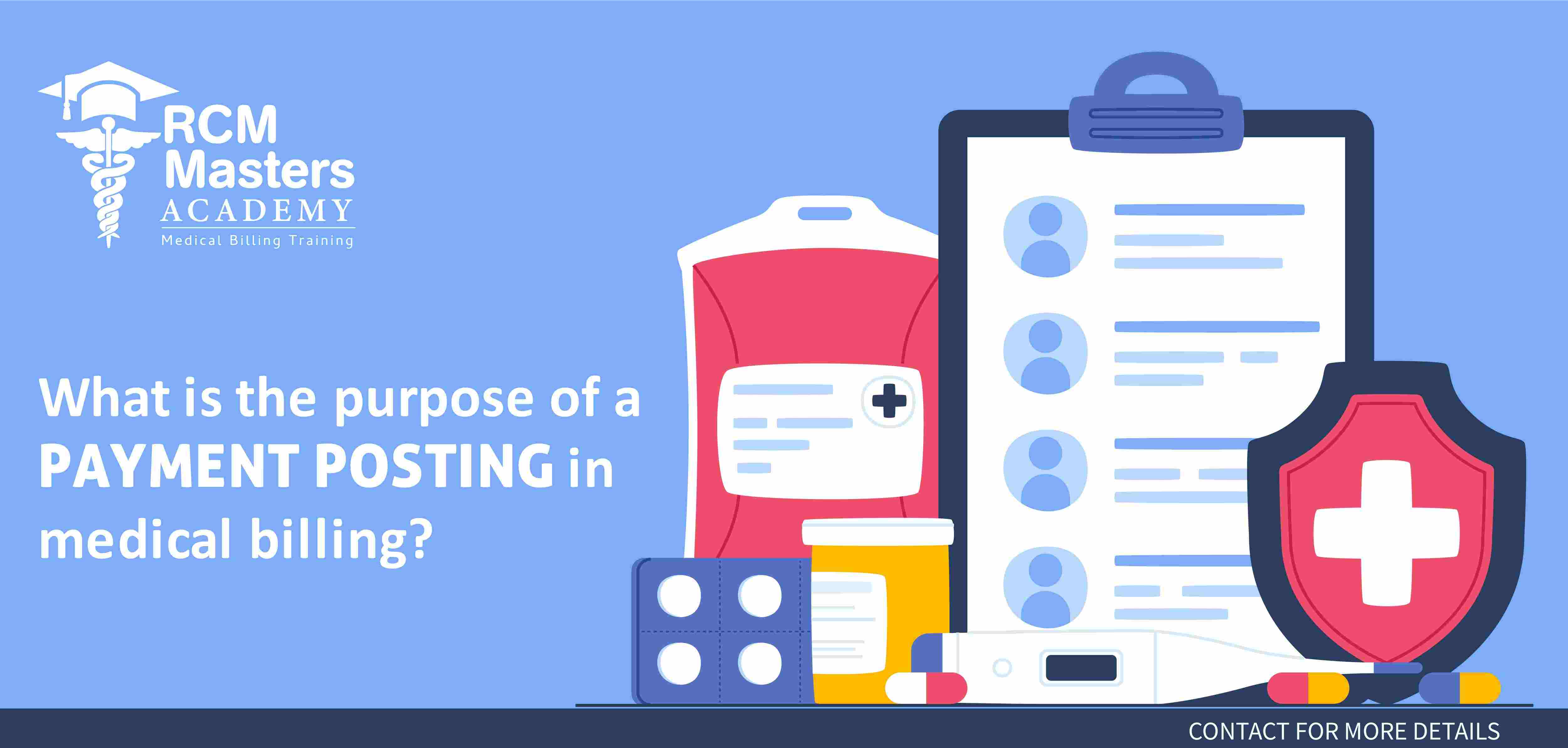 info@rcmmastersacademy.com
info@rcmmastersacademy.com

Medical billing is a complex process that involves a range of tasks, including coding, claim submission, and payment posting. Payment posting is an important step in medical billing that ensures that healthcare providers receive payment for the services they provide to their patients. We will discuss the purpose of payment posting in medical billing.
Payment posting is the process of recording payments received from patients, insurance companies, and other third-party payers in a healthcare provider's billing system. The purpose of payment posting is to ensure that the provider receives accurate and timely payments for the services they provide. Payment posting involves matching payments received with the corresponding claims, and posting the payments to the appropriate patient accounts.
The payment posting process begins with the receipt of payment from the patient, insurance company, or third-party payer. The payment is usually accompanied by an explanation of benefits (EOB), which provides information about the services rendered, the amount billed, the amount paid, and any adjustments or denials. The EOB is used to verify the accuracy of the payment received and to identify any discrepancies between the billed amount and the paid amount.
Once the payment and EOB are received, the payment posting process can begin. The first step is to verify that the payment is accurate and matches the amount billed. This is done by comparing the payment amount on the EOB with the billed amount on the claim. If the payment amount matches the billed amount, the payment is posted to the patient's account. If the payment amount is less than the billed amount, the difference is considered a patient responsibility and is billed to the patient.
The next step in the payment posting process is to identify any adjustments or denials on the EOB. Adjustments are changes made to the billed amount, such as discounts or write-offs. Denials are payments that are rejected by the insurance company or third-party payer for various reasons, such as incorrect coding or lack of medical necessity. Adjustments and denials are posted to the patient's account and are used to reconcile the patient's balance.
In addition to ensuring accurate and timely payments, payment posting also helps healthcare providers track their revenue and identify any issues with their billing processes. By monitoring payments and denials, providers can identify trends and make adjustments to their billing practices to improve their revenue cycle management.
In conclusion, payment posting is a critical step in the medical billing process that ensures healthcare providers receive accurate and timely payments for the services they provide. By accurately recording payments and reconciling patient accounts, providers can improve their revenue cycle management and identify areas for process improvement. As such, payment posting is an essential component of effective medical billing and plays a vital role in maintaining the financial health of healthcare providers.
You can enroll for our Online Medical Billing Training here: